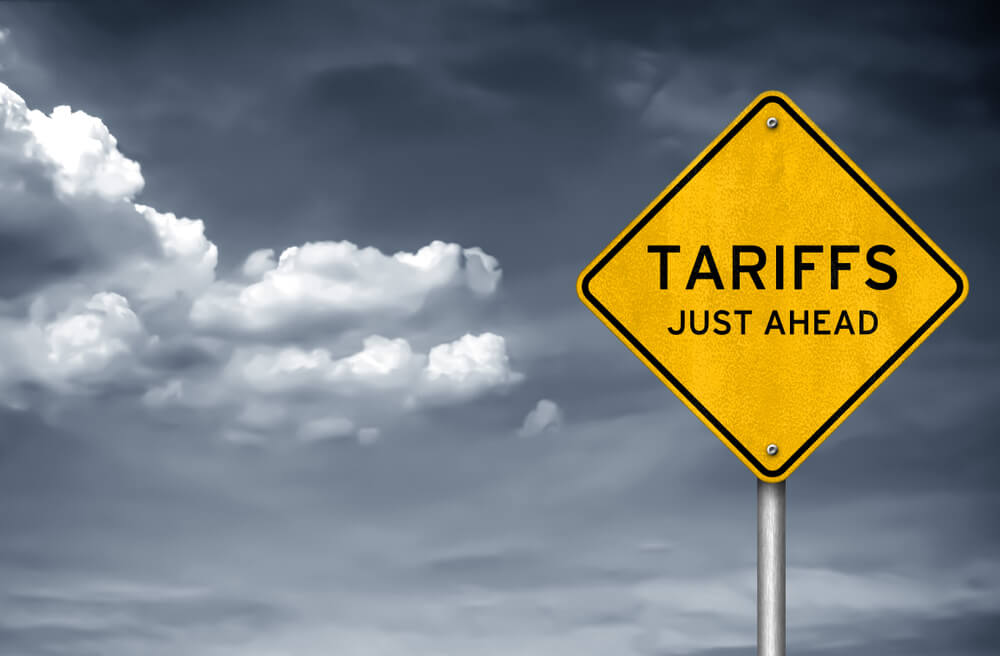President Donald Trump is sending a clear message to policymakers the world over with his latest $11 billion tariff threat to the EU: The trade wars are far from over, and the sagging global economy will just have to deal with it.
Even as the U.S. inches closer to a new trade deal with China, Trump reminded everyone Monday that there are other pacts he hopes to rewrite.
Should the tariffs on EU goods like helicopters and cheese come to fruition, they would be in retaliation for what the U.S. has long seen as illegal subsidies for Airbus SE, capping a 14-year fight between Boeing and its biggest European rival at the World Trade Organization.
The Trump administration says it will wait for the WTO to rule this summer before dropping the tariff hammer yet again.
Per Bloomberg:
That is potentially good news for the WTO and the broader system Trump has often said he wants to blow up. The Airbus-Boeing fight also predates Trump and it’s fair to say any U.S. administration would be willing to use WTO-sanctioned retaliatory tariffs.
“It’s a good sign,” Simon Lester, an associate director at the Washington-based Cato Institute, said in an interview. The Trump administration has been “sending some mixed signals about the World Trade Organization, but this action suggests they still value playing by the rules.”
But Trump has deeper issues with the EU. And that’s the problem hanging over the global economy, which the IMF predicts will grow this year at its slowest rate since the aftermath of the global financial crisis a decade earlier.
“The EU has taken advantage of the U.S. on trade for many years. It will soon stop!’’ Trump said on Twitter on Tuesday.
The two sides have kept a fragile truce since July when Jean-Claude Juncker, the European Commission president, and Trump agreed to launch talks on reducing industrial tariffs. The move put on hold Trump’s threat to impose separate tariffs on imports of cars and parts from the EU.
But the negotiations have yet to get underway in earnest with the EU’s 28 members only expected to give the European Commission the mandate it needs to begin talks in the coming days and casting a wary eye on European elections due next month. Moreover, Trump faces a decision in May on how he wants to proceed with the auto tariffs, though White House officials have been telling their European counterparts that there is a high chance that the duties could be delayed.
“It’s very unfortunate that the U.S., once the great advocate and architect of global alliances, seems today to be moving in a different direction,” EU trade chief Cecilia Malmstrom said in a speech in Tokyo after the latest tariff threat by Washington. “We see a broad withdrawal from multilateralism by the U.S.”
Firing Line
The EU isn’t the only one in Trump’s firing line, of course.
U.S. and Chinese officials are continuing their talks aimed at closing a deal within the next month. Next week, a Japanese delegation is due in Washington to begin negotiations over a bilateral deal with the U.S. that American companies and farmers are clamoring for to make up for Trump’s decision to pull out of the Trans-Pacific Partnership.
The threat of auto tariffs that could batter Japan’s economy has forced Tokyo back to the negotiation table. Their chief point man on trade, Toshimitsu Motegi has insisted that any deal must be mutually beneficial, suggesting that Japan won’t easily cave in. It’s unclear what the scope of the talks will be, after an agreement between Prime Minister Shinzo Abe and U.S. President Donald Trump in September referred to both goods and services.
Canada and Mexico are continuing to push for the U.S. to lift steel and aluminum tariffs imposed on them as all three countries work to have their legislatures ratify Trump’s replacement for NAFTA. India is also threatening tariffs on U.S. apples and other products in retaliation for Trump’s threat to kick the South Asian country out of a preferential trade scheme for developing nations.
“We’re still in the same tariff world that we were last year,” said Wendy Cutler, a former senior U.S. trade negotiator now at the Asia Society.
That still carries risks and lots of uncertainty, though Trump has been able to use tariffs to force the EU, Japan and other trading partners into negotiations, Cutler said. “The question is at what point does it backfire. At what point do countries just say enough is enough?”
